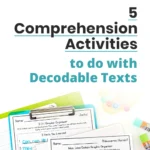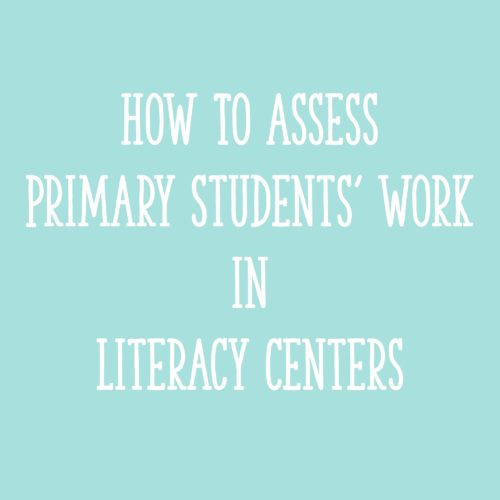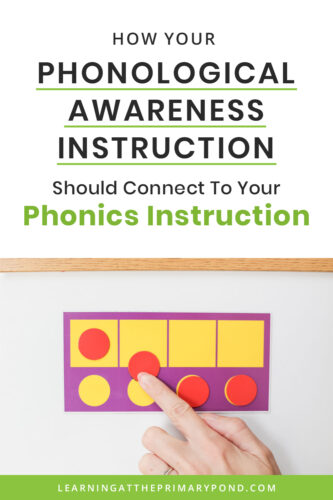If you’re wondering who can use a decodable text, the answer is pretty straightforward – anyone! Any child learning to read can benefit from a decodable text. Decodable texts are specially designed books, containing carefully selected words that include specific phonics pattern(s). This makes decodable texts an excellent tool for teaching children how to decode, or sound out words and develop strong reading skills. In this blog, I’ll share four engaging activities you can do with a decodable text to enhance your instruction!
The decodable text examples you’ll see throughout this post can be found here:
- Core decodable text sets for Kindergarten, 1st grade, and 2nd grade
- Seasonal and holiday decodable sets for Kindergarten, 1st grade, and 2nd grade
- “Decodable Safari” nonfiction decodables for Kindergarten, 1st grade, and 2nd grade
Also, if you want to learn a bit more about what decodable texts are, check out this blog: “Decodable Books – How to Best Use Them and Where to Find Them.”
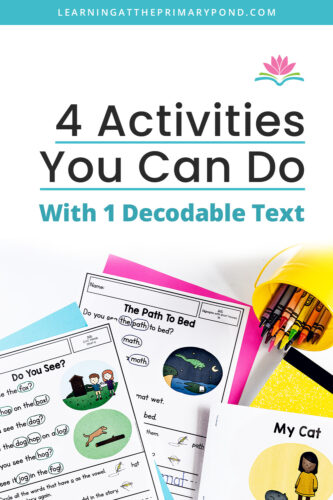
Different Activities to Use with Decodable Texts
Activity #1: Highlight/circle specific words ahead of time.
Before you have students actually begin reading the text, it can really helpful to have them first find and identify words that follow the specific pattern you’re working on.
For instance, in the text below, the focus is beginning “r” blends. Before reading the text, you could go through and have students highlight or circle all of the words that begin with an “-r” blend – words like “trap,” “frog,” “drag,” and “drop.” (This book is from my bundle of Decodable Books which can be found here.)
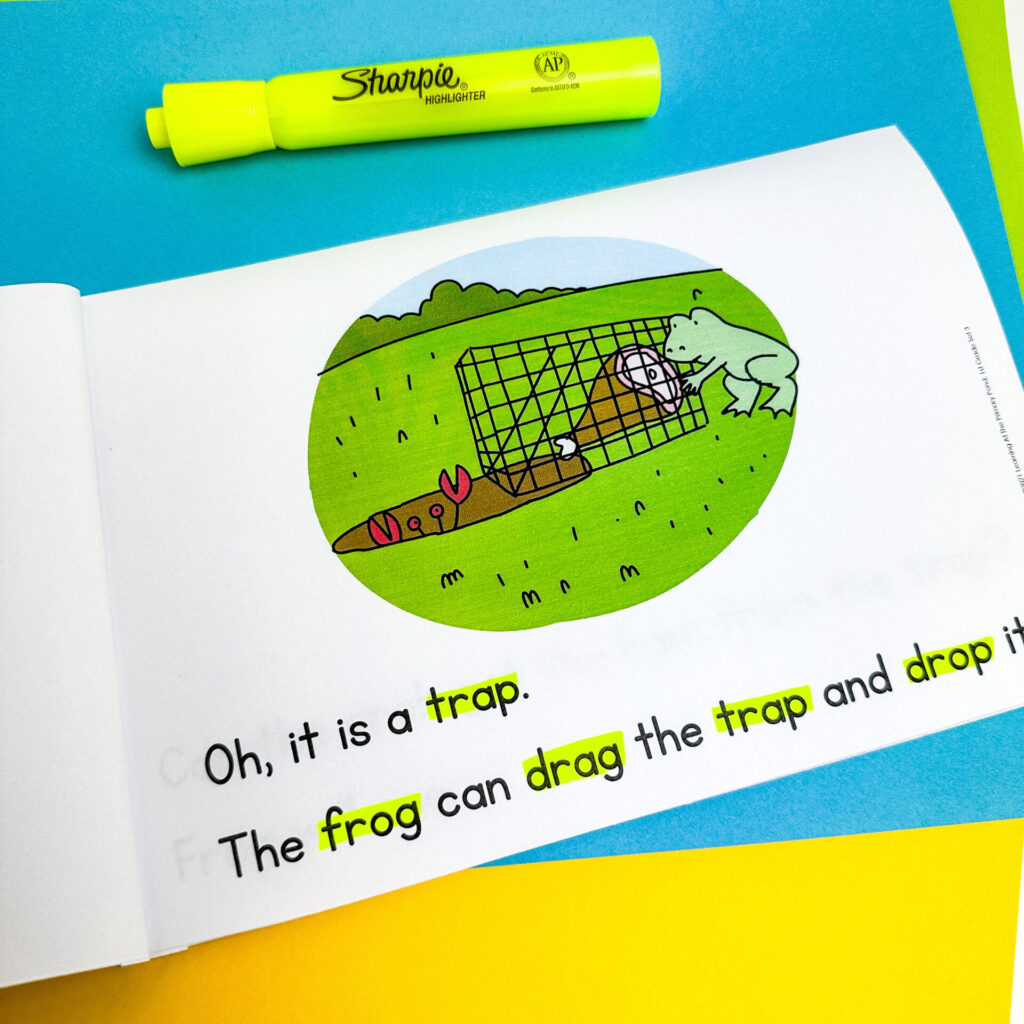
This practice is helpful because when students begin to read the text, they are “primed” to apply their new knowledge when decoding those words.
Activity #2: Use decodable texts to review high-frequency words.
In addition to including words with the phonics pattern students are working on, decodable texts should also include high-frequency words that students have learned. High-frequency words are words that appear frequently in texts, especially in beginning books for children. I talk more about how to explicitly teach high-frequency words in this blog – The Way I Learned to Teach High-Frequency Words Was Wrong (And What I Now Do Instead).
When students are reading decodable texts, you can help point out those high-frequency words for students so that they are seeing them in context. Eventually, the goal is that those high-frequency words become sight words – words that students can read instantly!
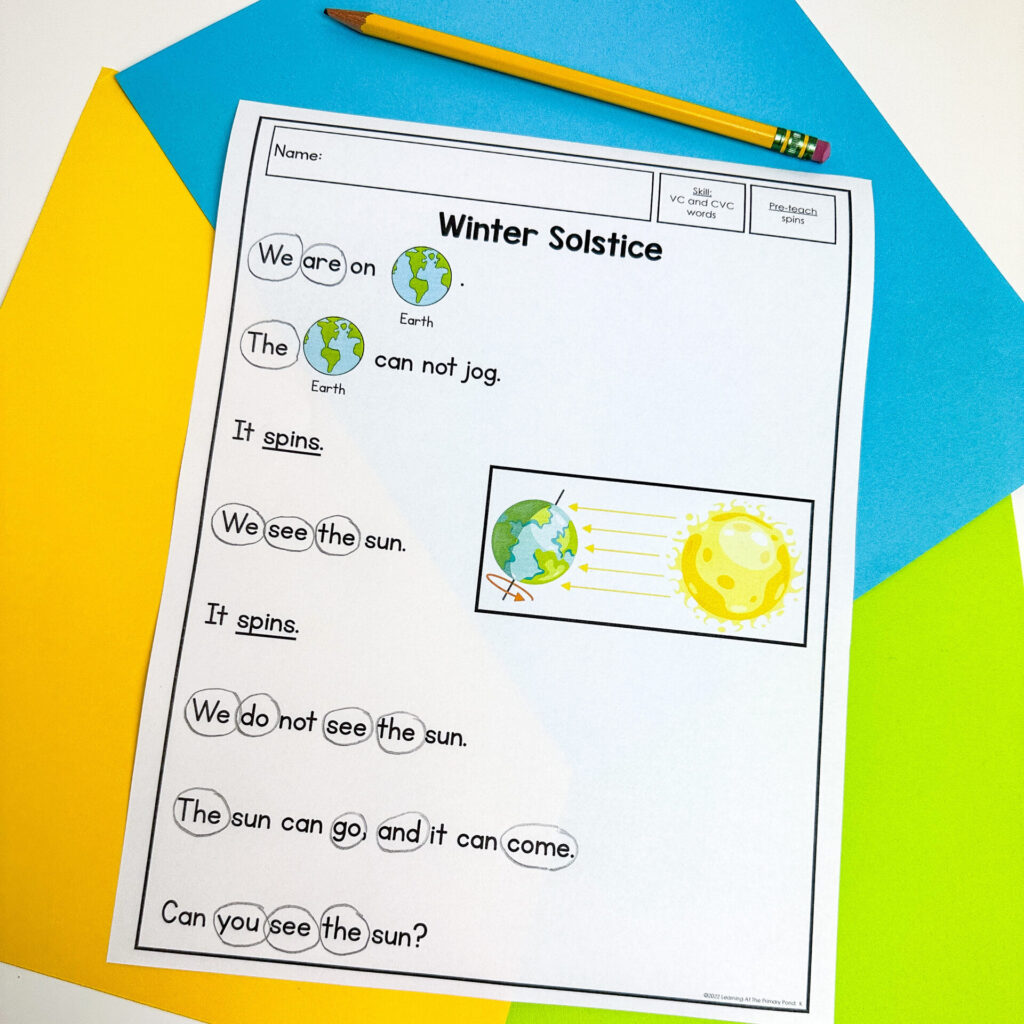
You can grab my 4-seasons decodable sets at this link! Every passage includes high-frequency words.
Activity #3: Talk about the meaning of the text with students.
Decodable books are definitely designed for decoding practice. (That’s a tongue twister!) But it’s also important that students make meaning from the text! You can start by having students retell what they read from the decodable text. You can also ask comprehension questions to encourage them to think more deeply about the text.
We want students to make the connection that the whole point of sounding out the words is to understand what the text is saying!
In this Decodable Safari product, there are comprehension materials that accompany every decodable text. Students have a chance to write about the text, answer comprehension questions, and complete a graphic organizer.
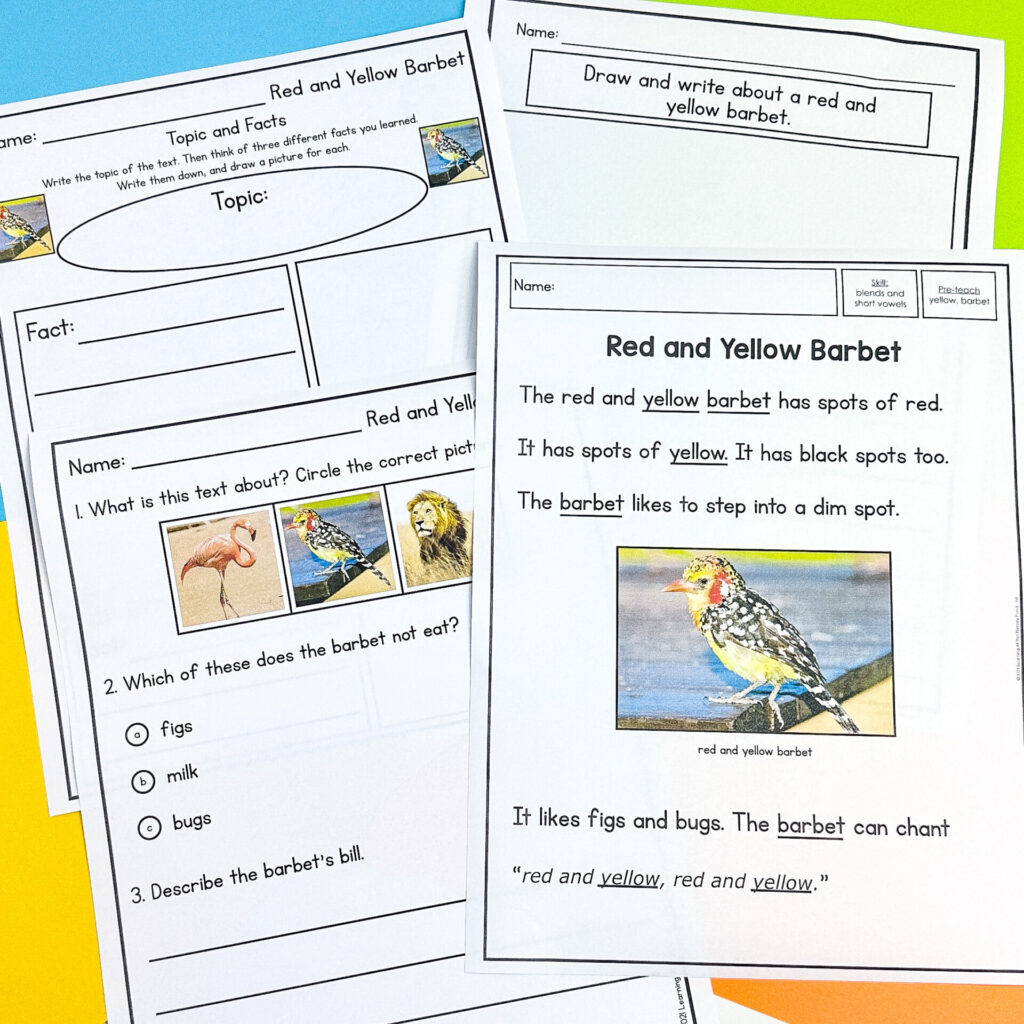
Activity #4: Reread for fluency.
A great way to build fluency is to read the same text more than once. As they reread, the text becomes easier and students’ confidence increases, a win-win!
Here are some ideas to make rereading a bit more engaging:
- Have students read to another classmate.
- Have them reread to a mirror.
- You could ask a parent volunteer to come in for a set time during the week, and students can reread to them.
- See if there is a “buddy classroom” you could partner with. Students pair up and read to their buddies.
- Have students reread to a stuffed animal.
- Let them record their reading, read again, and record again – they can watch or listen to both recordings to see how their reading improved!
Conclusion
I hope these tips on how to use decodable texts were helpful! If you have another activity with decodable texts you’d like to share with fellow teachers, please let me know in the comments!
Remember, all the resources you saw today were from one of the following:
- Core decodable text sets for Kindergarten, 1st grade, and 2nd grade
- Seasonal and holiday decodable sets for Kindergarten, 1st grade, and 2nd grade
- “Decodable Safari” nonfiction decodables for Kindergarten, 1st grade, and 2nd grade
Happy teaching!



